Project Management > DISCUSSION POST > ROJ 587 Week 1 Discussion Two – Portfolios,Programs & Projects - Download To Get A Pass (All)
ROJ 587 Week 1 Discussion Two – Portfolios,Programs & Projects - Download To Get A Pass
Document Content and Description Below
Understanding Portfolios, Programs, and Projects Introduction Welcome to the Week 1 Lesson. This week, we will be setting the foundation for the rest of the course. Understanding the nature of an or... ganization's vision, mission, and strategic plan sets the foundation for understanding portfolio, program, and project management. We also take a look at what it takes to kick off a program; a component of a portfolio. Corporate Strategy: Its Relationship to Portfolios, Programs, and Projects. Strategy is defined as a plan of action designed to achieve a specific purpose. Corporate strategy, therefore, is a plan of action designed to achieve the scope and purpose of the business, its objectives, its initiatives, and allocate necessary resources to achieve those objectives. Take a look at the following video for an overview of how it fits together. What is most important here is that no portfolio, program, or project should be undertaken unless there is a clear association to a strategic objective. The strength of that link has a major impact on the potential success of the portfolio, program, or project as well as its sustainability. History is full of organizations whose initiatives and programs were disconnected from an effective strategic plan; organizations that subsequently went bankrupt and disappeared. In other corporations, success can be traced to intense focus on mission critical portfolios, programs, and projects. Here is a comparative overview of the project, program, and portfolio management adapted from Standard for Program Management, Fourth Edition. Understanding Program Management As explained above, a program is a collection of related projects, including sub programs and program activities that, when managed effectively, deliver benefits that would not be available if the components were managed separately. Programs require leadership and coordination because the components within them are often interdependent, and the resources are used throughout the effort, so schedule management is critical. The benefits can include, for example, the improvement or enhancement of current systems or capabilities, new product or services, innovation, new training efforts, or corporate initiatives. The components of a program are related through complementary or dependent deliverables. According to the Standard for Program Management, Fourth Edition, the following are the elements of a program. • Components can be projects, subsidiary programs, or other activities, including operational activities that are required to support the program. • Projects are used to generate outputs or outcomes required by a program within defined budget, schedule, scope, and quality. • Subsidiary programs are pursued to achieve a subset of deliverables required by the parent program. • Other program-related activities are work processes or activities required to support the program, including but not limited to, training, administration, reporting, accounting, and operations. One of the primary differences between a program and a project is that the program must adapt its strategy for delivering benefits based on the outcomes and output of its components. Things can change as projects deliver more than less than was originally delineated in the scope. Missed or additional output may have to be included later on the program roadmap, or the output of a future component may have to be adjusted. The nature of a program is iterative and progressive. Components may be changed and adapted as the strategy to achieve the program benefits is optimized. What does optimization mean? It is the action of making the best or most effective use of a situation or resource. In program management, it means adapting the program strategy so that benefits can be delivered as cost effectively and rapidly as possible. Program Examples Here are some examples of programs. In the government or social sector, there are programs created to improve the standard of living of low-income, urban areas. Component projects include the following. • Set of vocational training for youth • Development of an after school activities Domestic violence education Employment services Build community centers The projects are related to one another and bound by the goal to improve conditions and education for the low-income community. Program managers develop the business cases for investment and charters to build the centers and develop supporting activities, evaluating their relationship to the goal as well as the timing of implementation. They must manage and engage stakeholders and investors throughout the implementation of the program. In construction, the development, Garden View Estates, is a program consisting of the following. Garden View Apartments at medium cost Garden View Villas—premium townhouses Garden View Homes—high-end single family homes Garden View Community Center, including a gym, swimming pool, and facility for indoor sports In manufacturing, release of a new electronic product is a program including the following. o Go-to market o Hardware o Tooling o Legal (patents, licensing) o Software Program Management Performance Domains As organizations define a strategic direction, including goals and objectives, programs are approved to support them. The organization must balance operations requirements, investments, stakeholder needs, marketplace changes and demands, innovation, risks, and resources during program selection. The program management performance domains are groups of related activities or processes that are required to deliver the benefits of a successful program. • *Program Strategy Alignment Performance Domain: Performance domain that identifies program outputs and outcomes to provide benefits aligned with the organization's goals and objectives • *Program Benefits Management Performance Domain: Performance domain that defines, creates, maximizes, and delivers benefits provided by the program • *Program Stakeholder Engagement Performance Domain: Performance domain that identifies, analyzes stakeholder needs, and manages communications to foster stakeholder support • Program Governance Performance Domain: Performance domain that enables and performs program decision making, establishes practices to support the program, and maintains program oversight • Program Life Cycle Management Performance Domain: Performance domain that manages program activities required to facilitate effective program definition, program delivery, and program closure * These definitions are taken from the Glossary of Project Management Institute, The Standard for Program Management, Fourth Edition 2017. The Program Life Cycle Overview The PMI Standard for Program Management depicts the program life cycle in the graphic below, illustrating the nonsequential nature of the a program's delivery phase. The stream outputs and outcomes of the program components contribute to the overall program benefits. Benefits can be realized incrementally as outputs of more than one program component or at the end of the program. As we progress through the activities that support successful program delivery, the life cycle will be explored in greater detail. The Role of the Program Manager Program management is not the same as project management. A project manager's focus is on doing things right, including organizing and coordinating tasks and resources in order to deliver a specific product, result, or service. Whether building a new car, planning an event, implementing a specific feature or system, project management usually has clear, well defined objectives. Programs are broader and more diverse. The program manager oversees multiple related projects and programs, all of which have a project manager and team. The program is expected to deliver value to the organization over time. All of the projects within the program compete for resources, not only internally, but externally as well. Above all else, the program manager is a leader who handles complex situations, politics, mediates conflict, coordinates complex activities, and prioritizes program components based on the outcomes of earlier components. Program managers are expected to know and work with the five program management performance domains. They interact with other program and project managers to coordinate activities and collaborate to achieve the best possible outcomes. Adaptation and flexibility are required for the ongoing adjustments to the program as components deliver unexpected results or it is impacted by organizational or external change. Program managers must be master communicators. They must be able to translate the needs and requirements of the organization to a broad range of stakeholders, including executive leadership, teams, and everything in between. They must have a profound understanding of the organization's current strategic direction and understand how the program fits into the plan. Program Manager Competencies: • Communication: Communicate effectively with a broad range of stakeholders, including executive leadership, sponsors, team members, customers, and vendors in groups, individually, or on committees. • Stakeholder Engagement: Manage complex issues that arise from the broad range of stakeholder expectations, requirements, and priorities. • Change Management: Programs usually represent significant and often dramatic change within an organization. Program managers must manage that change to maximize adoption of new systems, services, or innovations. • Leadership: Lead teams through the iterations of the program, helping them to be as high performance as possible. Make decisions and provide direction when required. Resolve conflicts and celebrate successes. • Analysis: Assess the performance of the program in terms of benefit delivery and alignment with strategic objectives. • Integration: Have a clear vision of the program and its contribution to the overall strategy of the organization—implementing course corrections to keep that alignment intact. Uncertainty Uncertainty is inevitable in program management. The aggregate impact of multiple project deliverables, which will never be exactly what was forecast, increases program uncertainty exponentially. Programs are designed to deliver specific benefits that may change as component outcomes are realized. Internal and external organizational change can also impact the program and its potential benefits. Long Durations Although projects are temporary and have a beginning, middle, and end, programs cans stretch on indefinitely as long as they are serving the organization. Program managers continue to roll new components into the program as older ones close. Governance Program governance is complex and involves a deep understanding of timing and the current corporate culture. Steering committees and executive leadership involvement is the rule rather than the exception. Planning Program planning is also more complex. It involves more resources and more potential for conflict, because oftentimes the same resources are used across the program. If a single component runs late, all of the subsequent programs can be impacted. Within a project, there is potential for schedule compression in the form of crashing or fast tracking. Schedule compression in a program is exponentially more intricate. The dependencies involve more resources and more money. Delegation The art of relinquishing control and delegating tasks is not easy but it is essential for a successful program manager. One person cannot manage every detail of every project in a program. Performance Domain, Program Strategy Alignment, and Business Case and Charter Corporations spend a great deal of time and energy in an attempt to select the correct project, programs, and portfolios to benefit the corporation. This is done to ensure the project work done by a company is aligned with the goals and strategies of the company. In mature, successful organizations, the evaluation and selection processes of potential portfolios, programs, and projects is formal and structured. There may exist a review board of some kind to review proposals and approve them. The program business case is essential to that review and approval process. Once the program is approved, the charter is created and issued, authorizing the program manager to initiate the program life cycle. The Program Business Case and Program Charter The Program Business Case The program business case links the program to the organization's strategic plan, goals, and objectives. During the program definition phase of the program life cycle, the program manager works with key sponsors and stakeholders to evaluate the organization's needs and requirements and formulate a program that responds to those needs. The business case showcases the program's potential to realize a vision that benefits the organization in terms of its strategy and potential for future success. It is the document that articulates the value of the program in contrast to possible alternative solutions and justification for the investment of time, resources, and money. The business case communicates the current situation, its risks, disadvantages, and describes the future vision so that executive management can decide if the program should go ahead. Elements of the Business Case The business case should include the following. o A description of the problem or opportunity o Links to strategic objectives o Comparison possible solutions o Benefits o Risk o Investment o Timeline o Impact on the organization from a change perspective o Organizational capability to deliver the program outcomes from a resource perspective When writing the business case, consider the following. o The document should be brief, clear, and concise. o Make it interesting, clear, and concise. o It should be fact based. The Program Charter Using the business case as a key input, the program charter authorizes the program manager to begin work. It defines the scope and purpose of the program, articulates the constraints, assumptions, high-level risks, and projected resource allocation as well as a preliminary budget. It may also include a list of potential program components. It should describe the elements of program governance, including authority, approval levels, and meeting cadence. The Real World—A Story of Program Uncertainty A Story of Program Uncertainty [Show More]
Last updated: 2 years ago
Preview 1 out of 10 pages

Buy this document to get the full access instantly
Instant Download Access after purchase
Buy NowInstant download
We Accept:

Reviews( 0 )
$12.00
Can't find what you want? Try our AI powered Search
Document information
Connected school, study & course
About the document
Uploaded On
Jun 01, 2023
Number of pages
10
Written in
Additional information
This document has been written for:
Uploaded
Jun 01, 2023
Downloads
0
Views
61

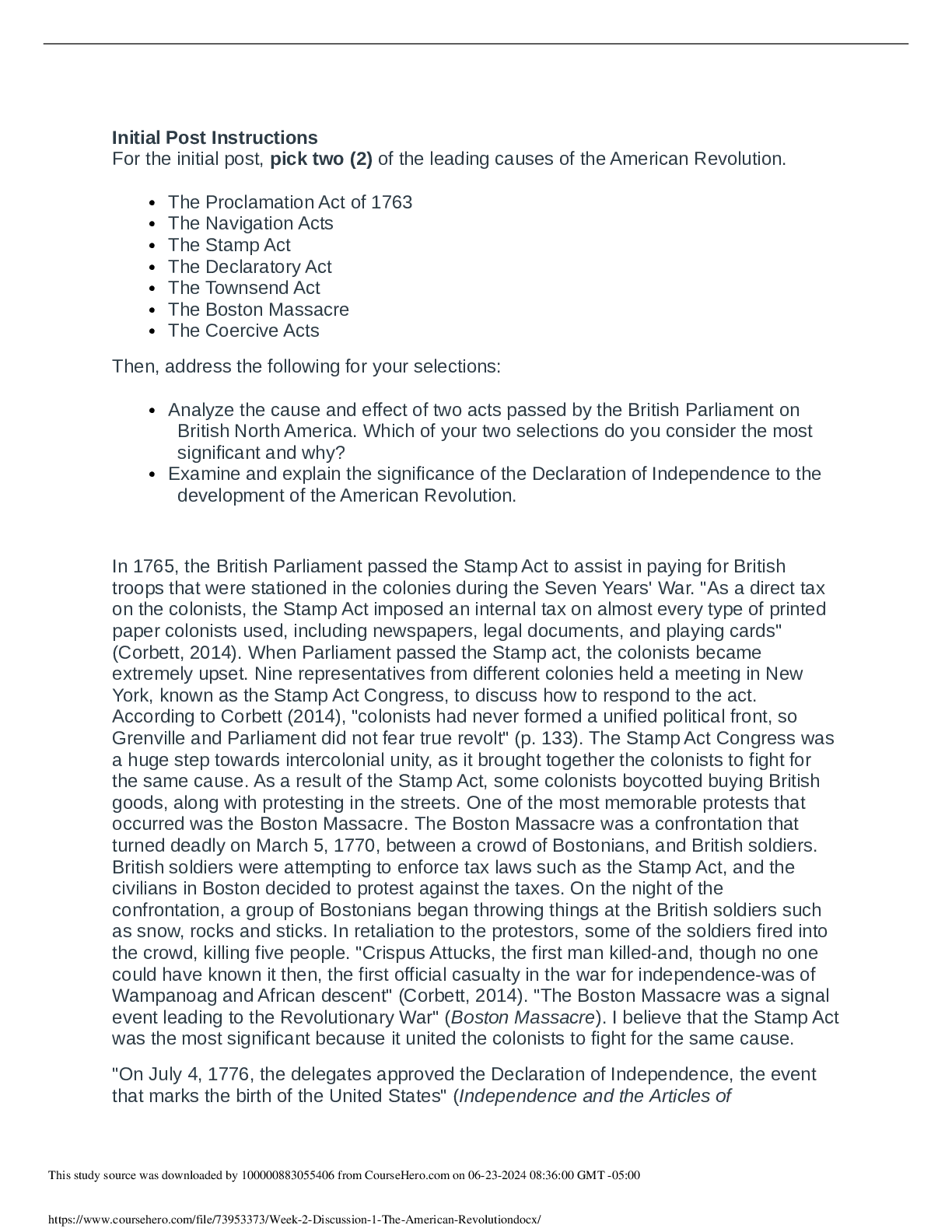
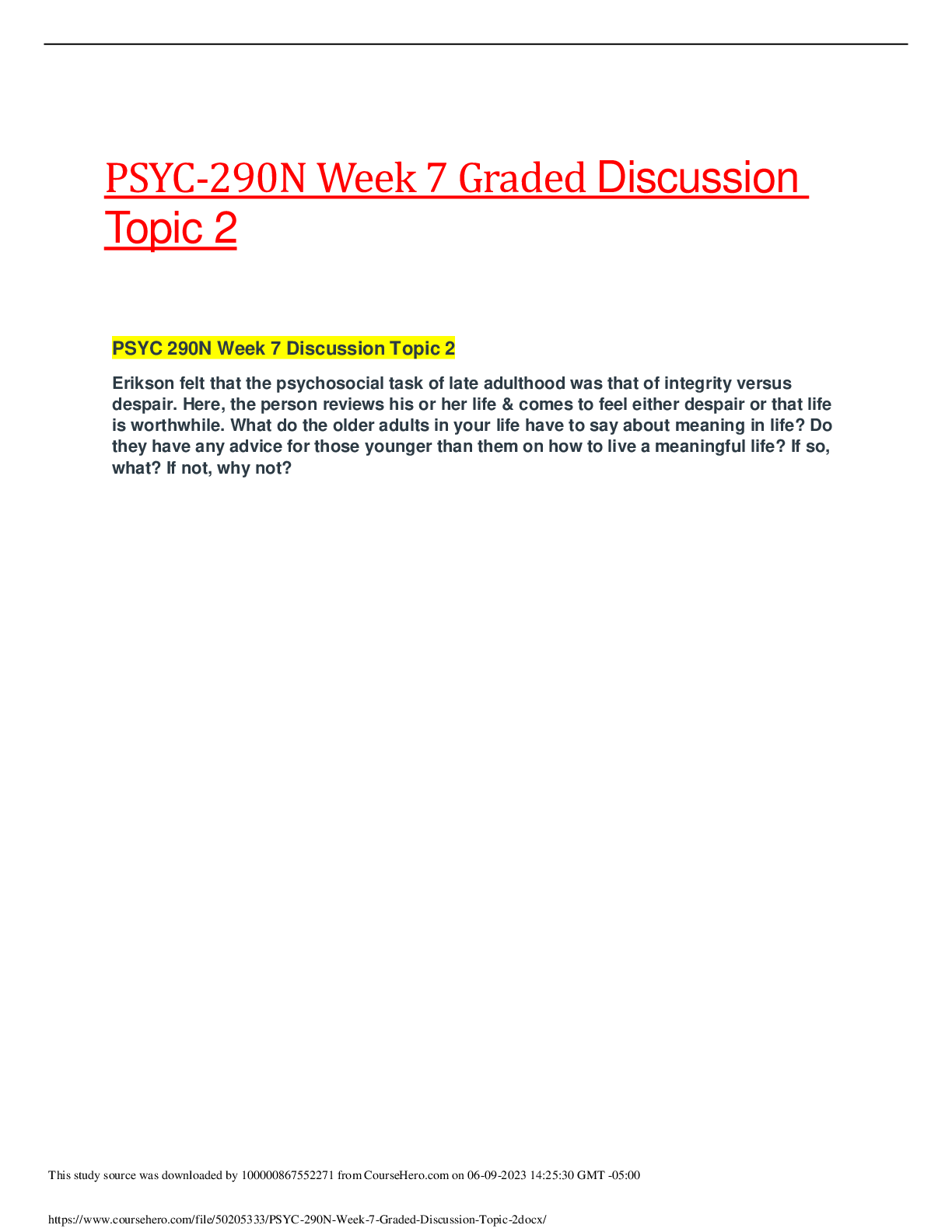
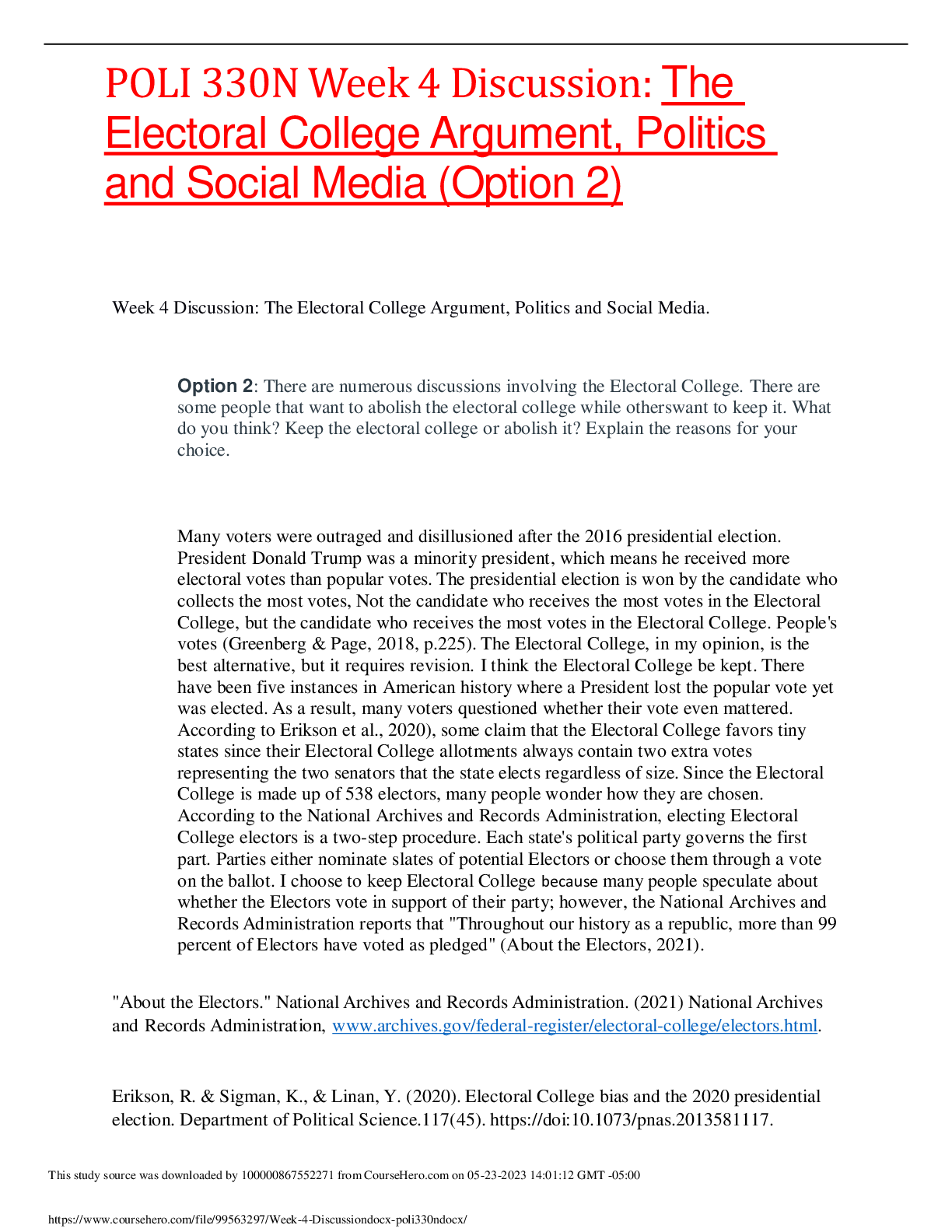

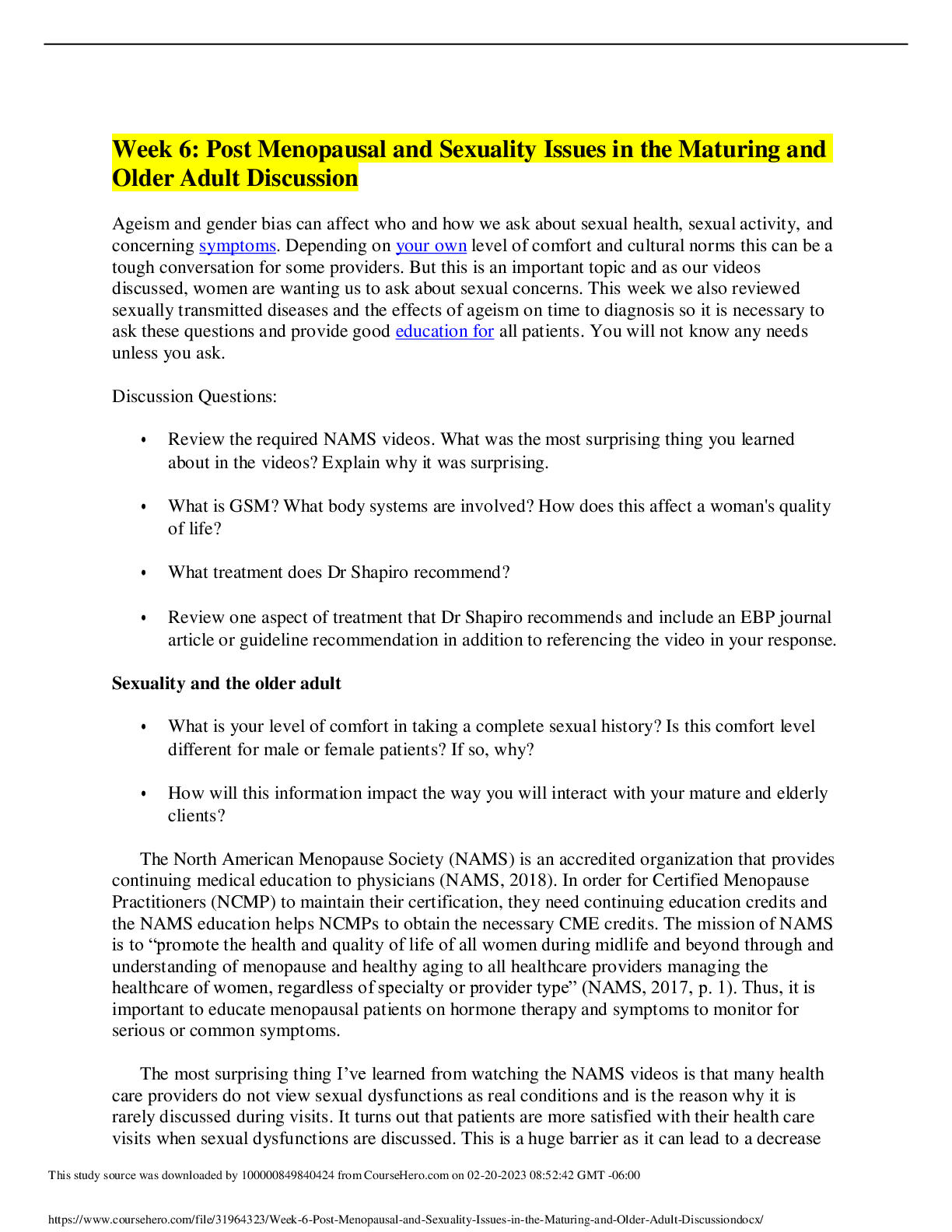
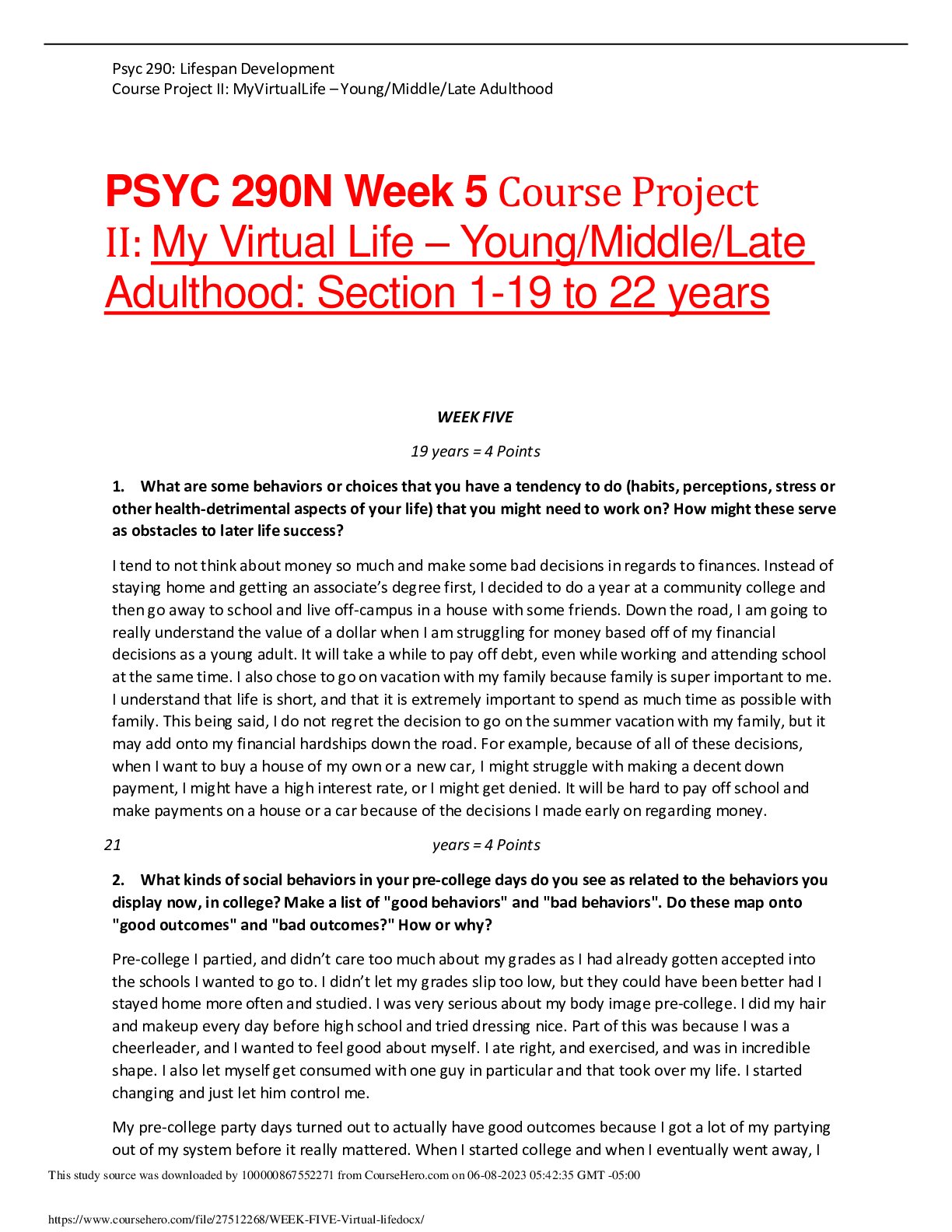
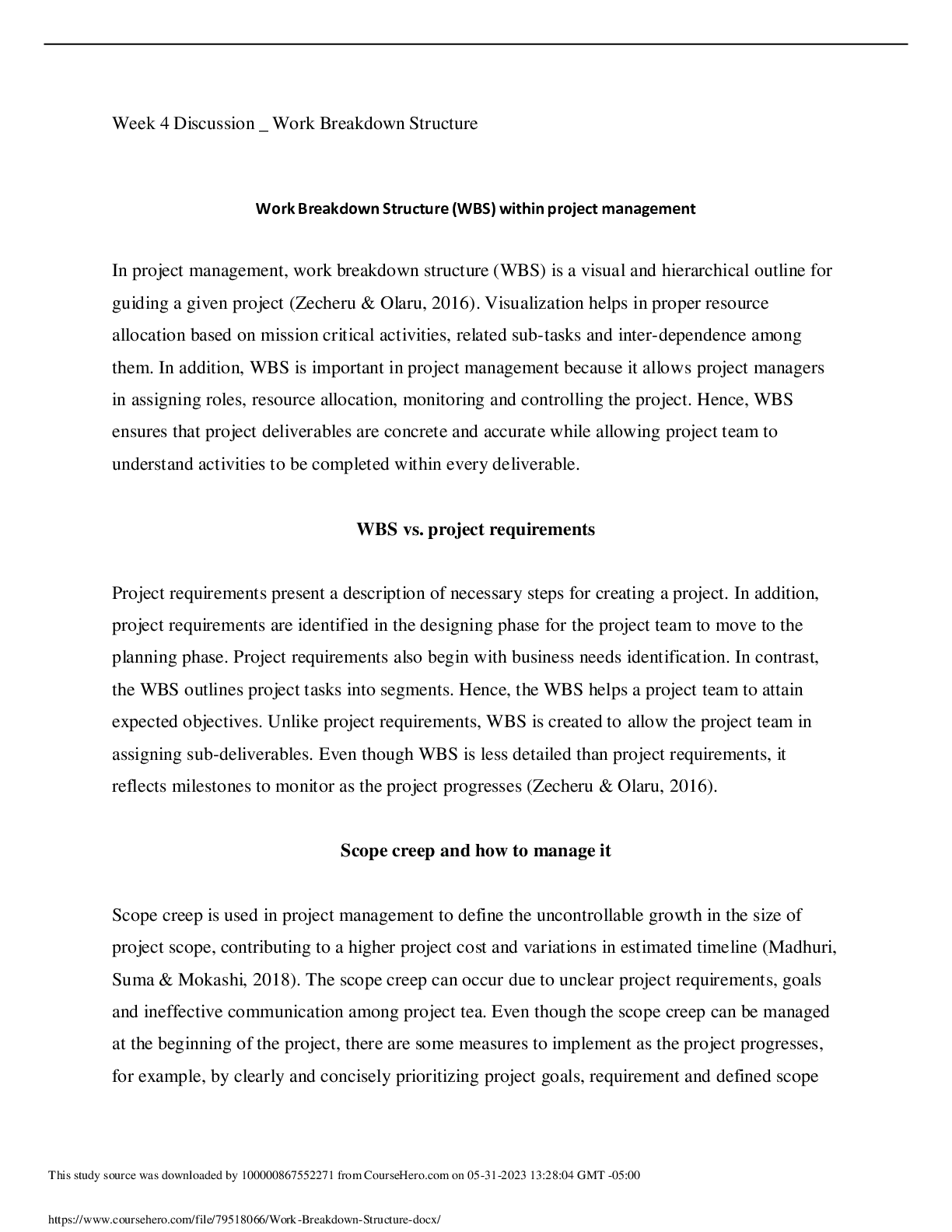

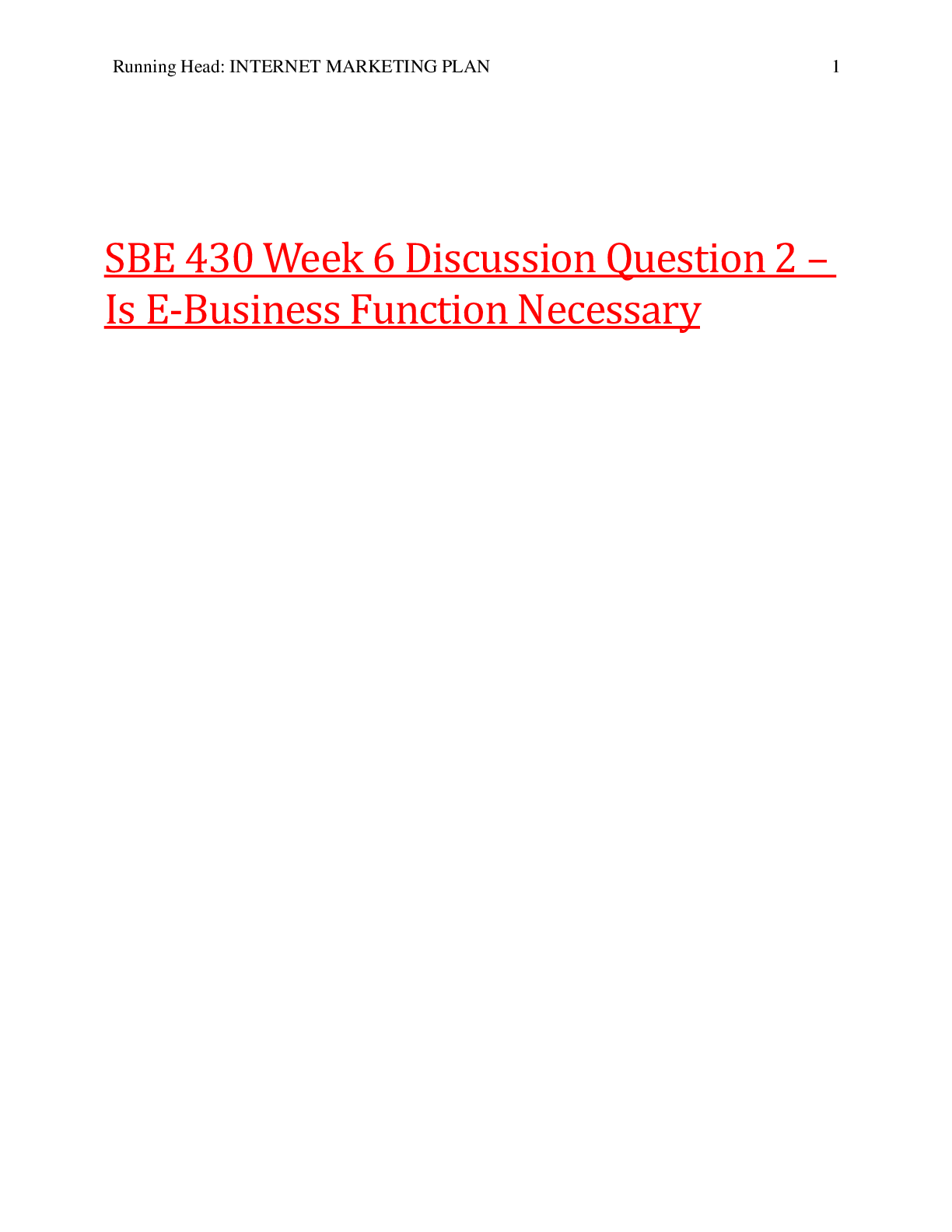
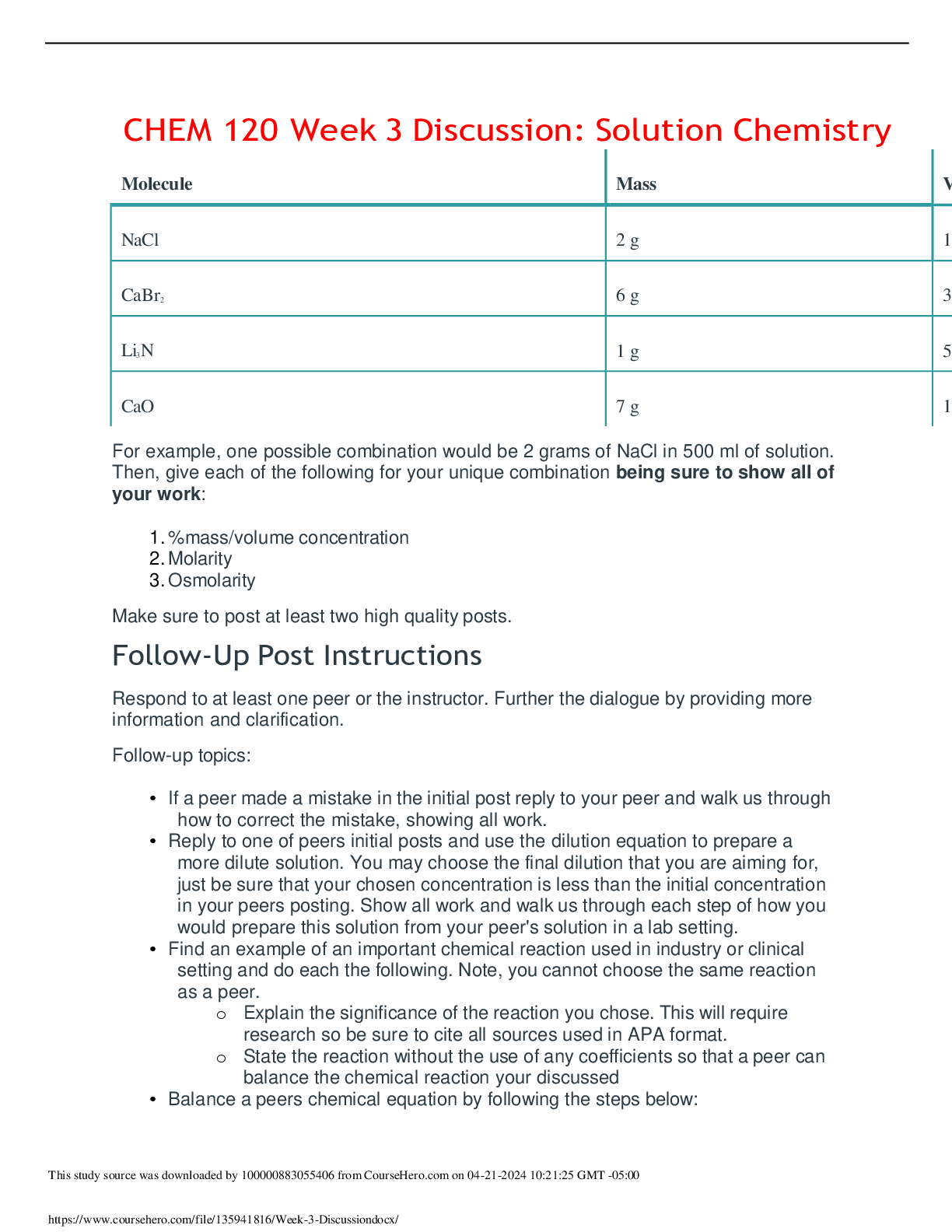
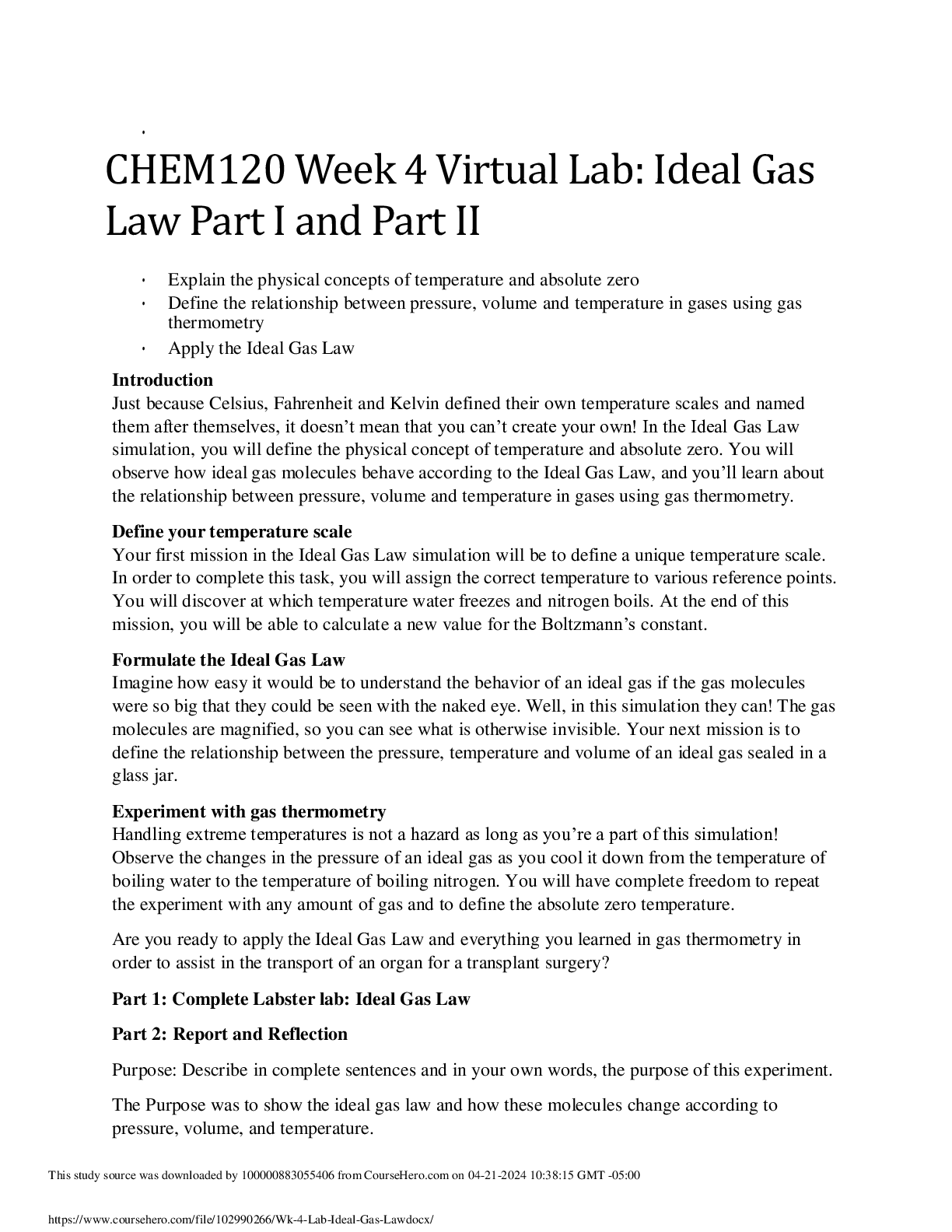





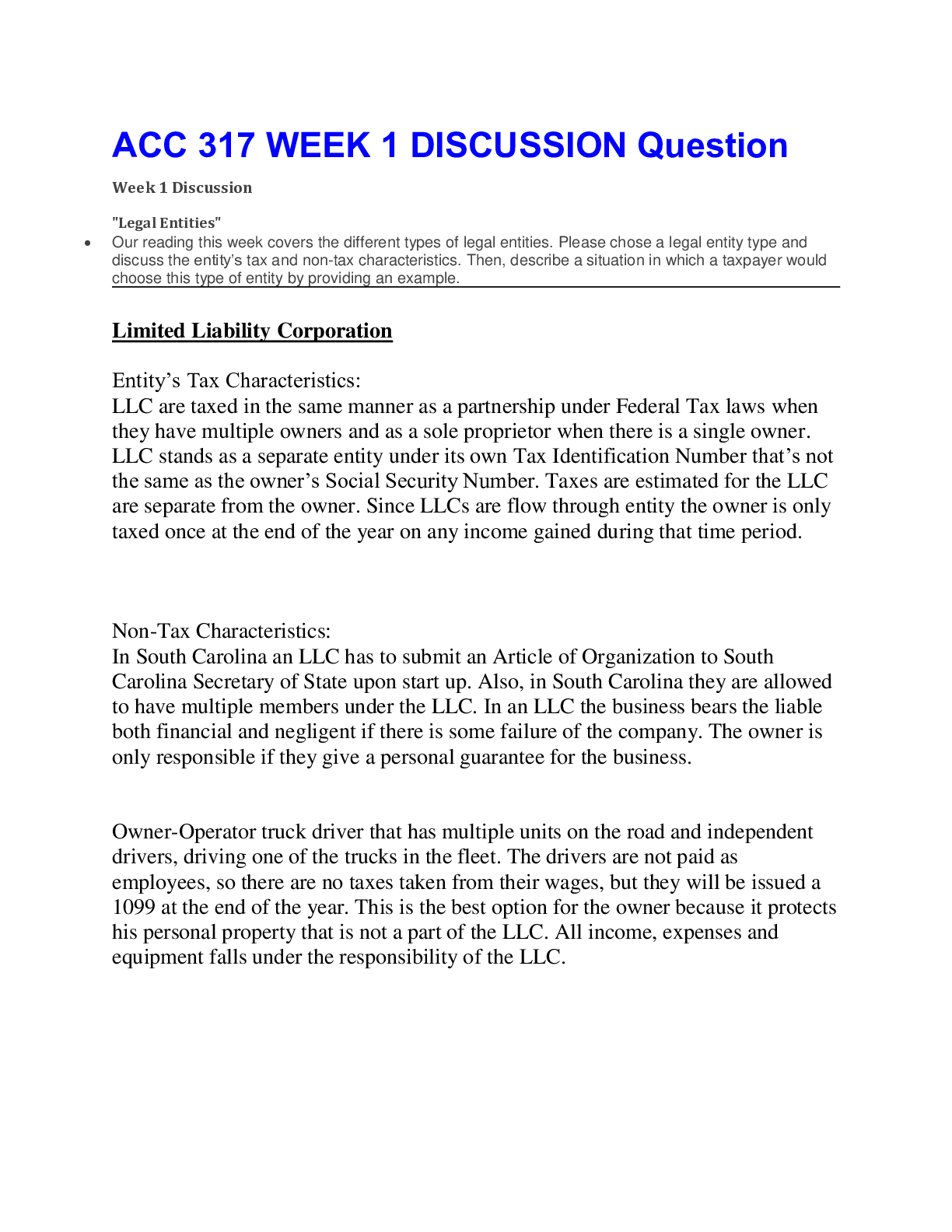



 – South Carolina State University.png)



